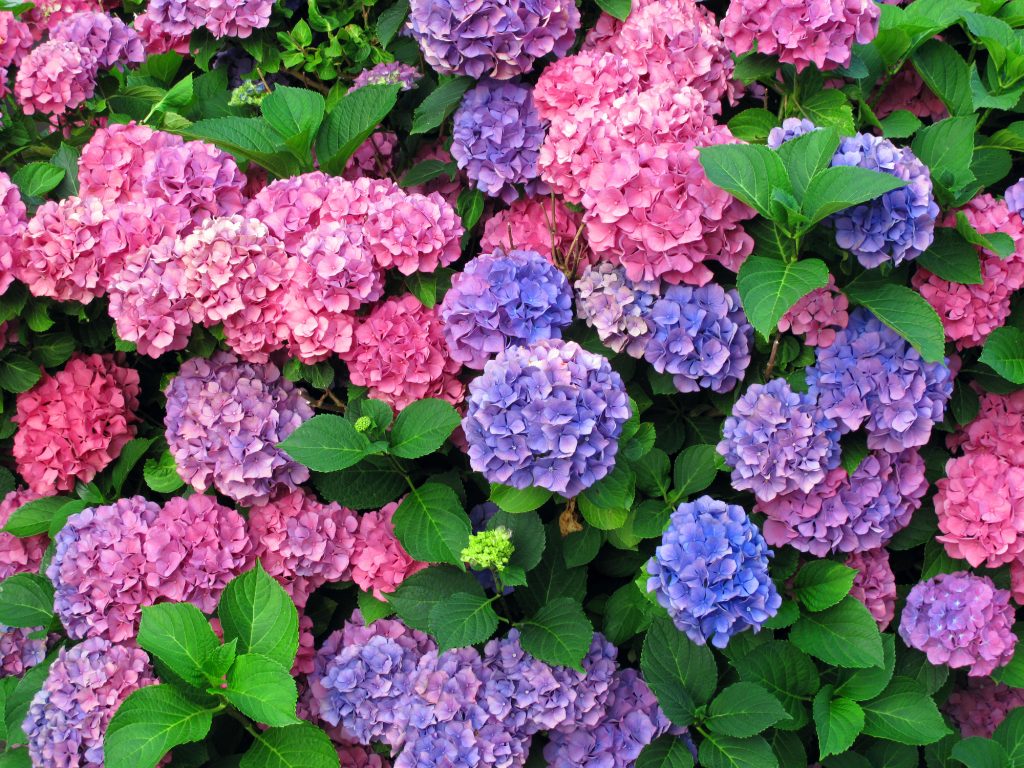Hydrangeas, with their exquisite blooms and varied colors, have captivated garden enthusiasts for generations. Cultivating these charming shrubs in the Pacific Northwest presents an exciting opportunity, given the region’s moderate climate and abundant moisture. In this article, we’ll explore the art of nurturing hydrangeas in the Pacific Northwest, from selecting the right varieties to providing optimal care for these stunning plants.
Choosing the Right Varieties:
The Pacific Northwest’s temperate climate offers a hospitable environment for several hydrangea varieties. Some of the most popular types include:
- Bigleaf Hydrangea (Hydrangea macrophylla): This classic hydrangea boasts large, rounded flower clusters that can change color based on soil pH. Acidic soil yields blue flowers, while alkaline soil produces pink ones.
- Panicle Hydrangea (Hydrangea paniculata): Known for its cone-shaped flower clusters, the panicle hydrangea is highly adaptable and can thrive in various soil conditions.
- Oakleaf Hydrangea (Hydrangea quercifolia): With its distinctive lobed leaves and elongated clusters of white flowers, the oakleaf hydrangea adds elegance to Pacific Northwest gardens.
Site Selection:
Hydrangeas in the Pacific Northwest benefit from dappled sunlight or partial shade. Morning sunlight and afternoon shade are ideal, as this mimics the natural conditions they thrive in. Be mindful of strong afternoon sunlight, which can cause wilting and stress to the plants.
Soil Preparation:
Hydrangeas prefer well-draining soil rich in organic matter. The Pacific Northwest’s typically acidic soil is advantageous for blue-flowering varieties, but if you’re aiming for pink blooms, consider amending the soil with lime. Regularly testing and adjusting soil pH can help you achieve the desired flower colors.
Watering and Moisture:
The Pacific Northwest’s moisture-rich climate aligns perfectly with the hydration needs of hydrangeas. While they appreciate consistent moisture, they also require good drainage to prevent root rot. Mulching around the base of the plant can help retain soil moisture and regulate temperature.
Pruning Techniques:
Pruning hydrangeas in the Pacific Northwest requires a thoughtful approach. Bigleaf hydrangeas (H. macrophylla) bloom on old wood, so prune right after they finish flowering to encourage new growth for next year’s blossoms. Panicle hydrangeas (H. paniculata) and oakleaf hydrangeas (H. quercifolia) bloom on new wood and can be pruned in late winter or early spring.
Fertilization:
Hydrangeas benefit from a balanced, slow-release fertilizer in the spring. Avoid excessive use of high-nitrogen fertilizers, as this can lead to lush foliage but fewer blooms. Follow the recommendations on the fertilizer packaging for best results.
Winter Protection:
While hydrangeas are generally hardy, young plants and specific varieties might require some winter protection in colder regions of the Pacific Northwest. Applying a layer of mulch around the base of the plants can help insulate the roots and prevent winter damage.
Pest and Disease Management:
Keep an eye out for common pests like aphids and spider mites, especially during dry spells. Regular inspection and the use of natural remedies can help manage infestations. Additionally, proper spacing between plants aids in promoting good air circulation and prevents the spread of diseases.
In conclusion, cultivating hydrangeas in the Pacific Northwest is a rewarding endeavor that can yield breathtaking results. By choosing the right varieties, providing appropriate site conditions, preparing the soil, maintaining consistent moisture, employing proper pruning techniques, fertilizing thoughtfully, and addressing potential pests and diseases, you can enjoy the stunning beauty of these iconic shrubs in your Pacific Northwest garden. With a little care and attention, your hydrangeas will flourish and create a picturesque landscape for you to enjoy year after year.
Need help with planting? Give us a call at Levy’s Landscapes Washington: (360) 876-6567
